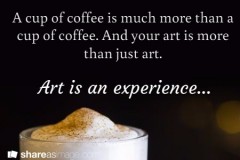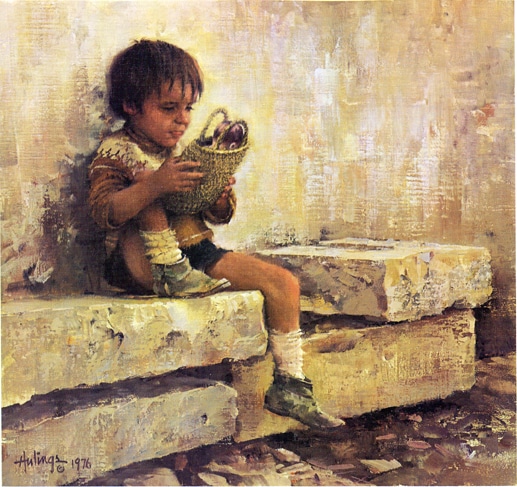In college, I was fascinated to learn about the “Big Mac Index,” an economic index that tracked the price of McDonald’s famed sandwich in various countries around the world. (I’m using the description “economic index” liberally since the Big Mac Index started as a teaching tool rather than an actual economic index.) Presumably, the Big Mac was more or less the same (ish) sandwich in each McDonald’s, and McDonald’s were very clearly ubiquitous worldwide, so the Big Mac Index was supposed to be a shorthand calculation of exchange rates, particularly purchasing power parity in economic lingo. And if it wasn’t, we could suspect a particular currency was under- or over-valued.
A similar “Tall Latte Index” was coined by The Economist in 2004, mirroring the rise of Starbucks locations around the world and using the same principles: A latte is a latte, and its price in any country was an indicator of purchasing power parity: Whether or not a unit of currency in one country purchased the same amount of latte in another currency.
 But of course, life is more complicated than that.
But of course, life is more complicated than that.
The Tall Latte Index was thrown into a bit of apparent disarray when the commodity price of coffee decreased this summer. It is cheaper to purchase coffee beans as a commodity—a useful thing meant to satisfy a want or need.
And yet, Starbucks announced on July 6, 2015 that its prices were going up.
This makes no sense. And it makes perfect sense.
Starbucks “is selling an experience, not a commodity” Jeff Sommer pointed out in his article “Cheap Coffee and the Starbucks Premium” in The New York Times in August. If Starbucks were only selling coffee, its prices would rise and fall based on the commodity price of its primary input: Coffee beans. One measure showed a 44% decrease in the global coffee benchmark for premium coffee from October 2014 through July 2015. And yet, we paid more, not less, for these coffee beans when packaged in a cup from Starbucks.
Because Starbucks is selling much, much more than just coffee.
Sound familiar? It should.
An artist creates using input items—paint, canvas, supplies, clay, metal—but the value of the output is considerably different than the actual price of the materials. The price of an artist’s work isn’t directly tied to the cost of the materials. It is much more complicated than that.
If it weren’t, pricing your art would be easy. There would be a simple formula to calculate the direct cost of the materials and the indirect costs of running your studio expressed in a simple hourly rate. The result would be the price for each work. Period.
But you aren’t selling raw materials. You are selling the magic you perform on those raw materials. You are selling an experience. You are creating value.
Understanding this helps frame the discussions you have about the price of your work. (And understanding a phenomenon, like the Big Mac Index, helps you communicate effectively to those outside the art world, i.e., your customers.)
We are willing to pay more for a cup of coffee than simply the price of input ingredients—coffee beans—because we appreciate the experience. We like the smell of the shop when we walk in. We enjoy watching those around us who use the space for creativity, paying “rent” in the form of a cup of coffee instead of in the form of office space. We send a message about our status when we hold a cup of coffee from a premium vendor; we send a message about what we value when we shop at a socially conscious coffee shop. We communicate our vices to those around us when we hold 20 or more ounces of caffeine goodness. We communicate our importance, our busyness by our need for caffeine.
Yes, a cup of coffee is much more than a cup of coffee. And your art is more than just art.
Art is an experience. It affects multiple senses; it affects our guts. We share our experience with those around us when we share the story of purchasing a piece with friends. We recall a fond moment in time when we stroll by a piece in our homes. We escape our daily routine with a visit to a gallery or a museum. We convey a message to those around us based on the art we value.
I’m often asked for a formula to calculate the price of art. But pricing is an art, not a science.
The price for an artist’s work is influenced by four key factors. The first factor—cost—is the easiest to measure. We know (or we can figure out) the direct cost of the supplies and materials that went into each work. We know (or we can figure out) the indirect cost of our studio space, our brushes, our insurance, our marketing efforts, and our time.
What are your costs? Cost—like a commodity price—is easy to track. (But don’t confuse easy with fun; the administrative part of running a creative career is generally less fun than the creative part. But it is no less important.)
If you really want a formula to use, add up all your costs for the year (studio costs, life costs, materials costs) and divide that number by the hours you want to work for the year. But be honest: You aren’t going to work 40 hours a week for 52 weeks a year. Maybe you have 20 productive studio hours per week, and maybe you visit your studio 40 weeks per year. The result is your hourly rate. It’s helpful to know this number. It better informs your price (and how you spend your time!). But simply calculating an hourly rate and multiplying it by the number of hours you spend on any given piece is too easy.
It ignores the art behind pricing (both literally and figuratively). The formula focuses on the commodity of art, but not the experience behind it. This formula suggests that if it is cheaper to purchase paint, the price for a painting should go down. It suggests if you become an expert at a particular technique such that you can perform it faster, the price of the work you produce should be lower, not higher.
This makes no sense. Starbucks doesn’t do it; McDonald’s doesn’t do it. Why should you?
That’s why we consider the other three factors as well. The second and third factors—competition and customers—are less easy to measure. They are fuzzy factors, influenced by experience, a bit of research, and a bit of intuition.
What are other artists charging for similar works? I know, I know. No one is similar to you. But remember, the general public doesn’t know that. For the general public, Netflix is competition to a live theatrical performance, because someone could indulge in either on a quiet Friday night. Technically, anything that could be in place of your work is your competition. Use your creativity to identify your competition—and the price points for your competition. And use your creativity to differentiate yourself from it.
Who are your target customers? I know, I know. You don’t have target customers. You just make great art. But who would you like to be purchasing your art? Answer honestly—and be more specific than “anyone.” Do you target a high-end market? Is your work more conceptual? Does your work have a social consciousness, so that the intended use of the piece is at least as important as the person purchasing it? Do you feel strongly about affordability? Describe your ideal customer and consider the price point that is most appealing to him or her.
The fourth factor is my favorite. (And it’s also the most effective way to explain the price of any given piece.) What are you competencies? What makes you the best at whatever you do? Competencies are influenced by your life experiences, your professional experiences, your dedication, your passion, and your point of view.
Your competencies are reflected in what you do to the raw materials. Competencies are what make you who you are as an artist. They are the experience behind the art. Your competencies create the value behind the art.
Competencies put the art back in the science of pricing. Competencies—and the experience surrounding any piece of art—are why a Big Mac Index or a Tall Latte Index is amusing and educational, but not absolute. Purchasing decisions, particularly for art, are more complicated than input costs. Art is about more than the price of coffee beans. By considering costs, customers, competition, and—most importantly—competencies, an artist can set, describe, and defend his or her pricing decisions with confidence.
FOR FURTHER READING:
“The Big Mac Index: Global Exchange Rates To Go” from The Economist (July 16, 2015)
“Why Starbucks Prices Went Up as Coffee Beans Got Cheaper” by Jeff Sommer, The New York Times (August 15, 2015).







